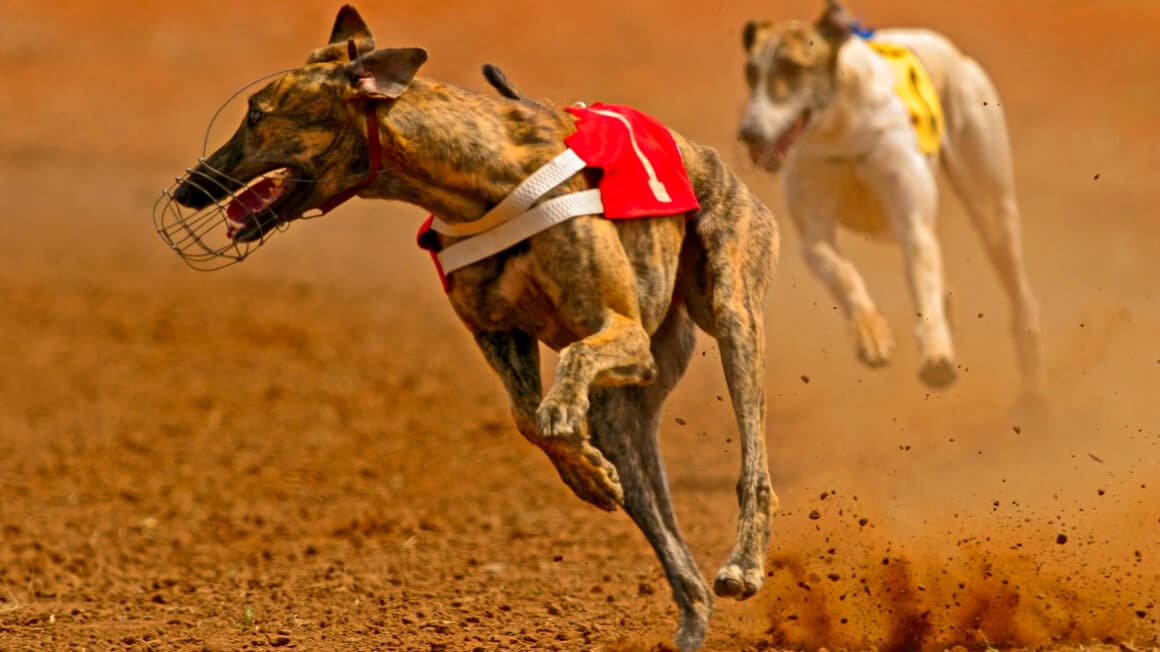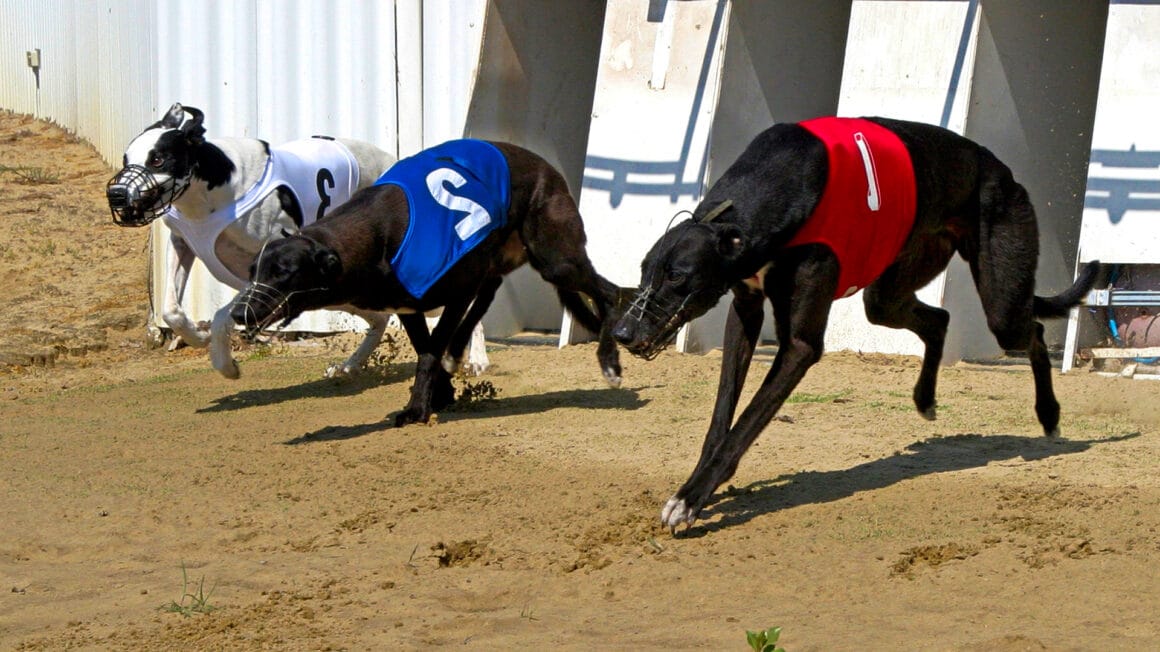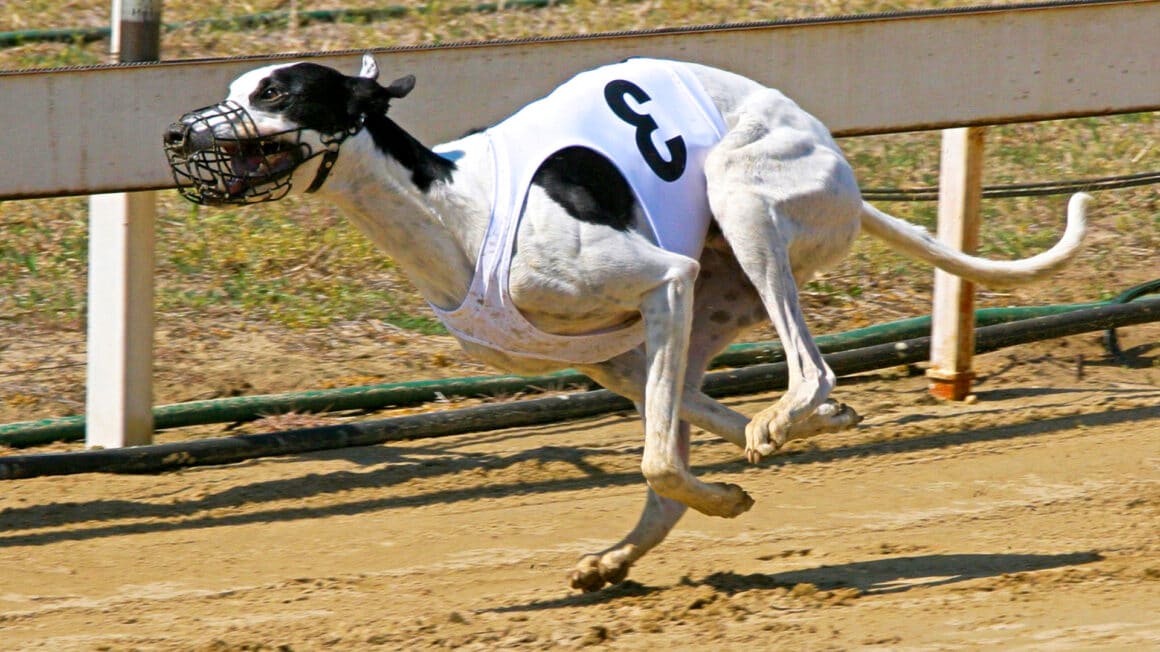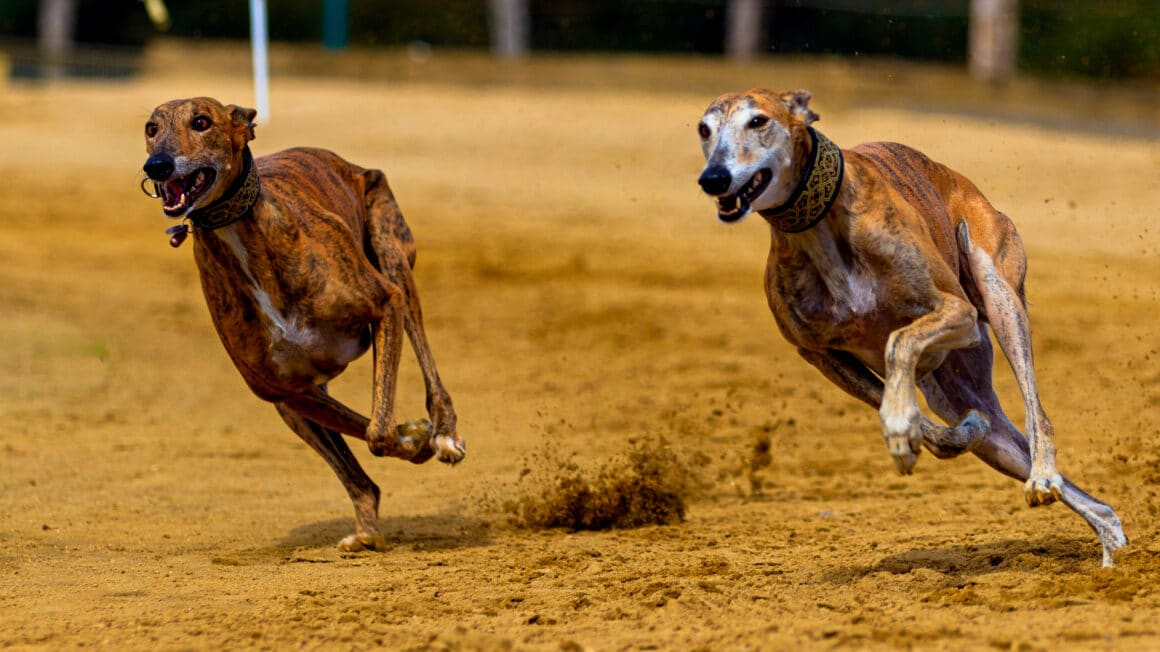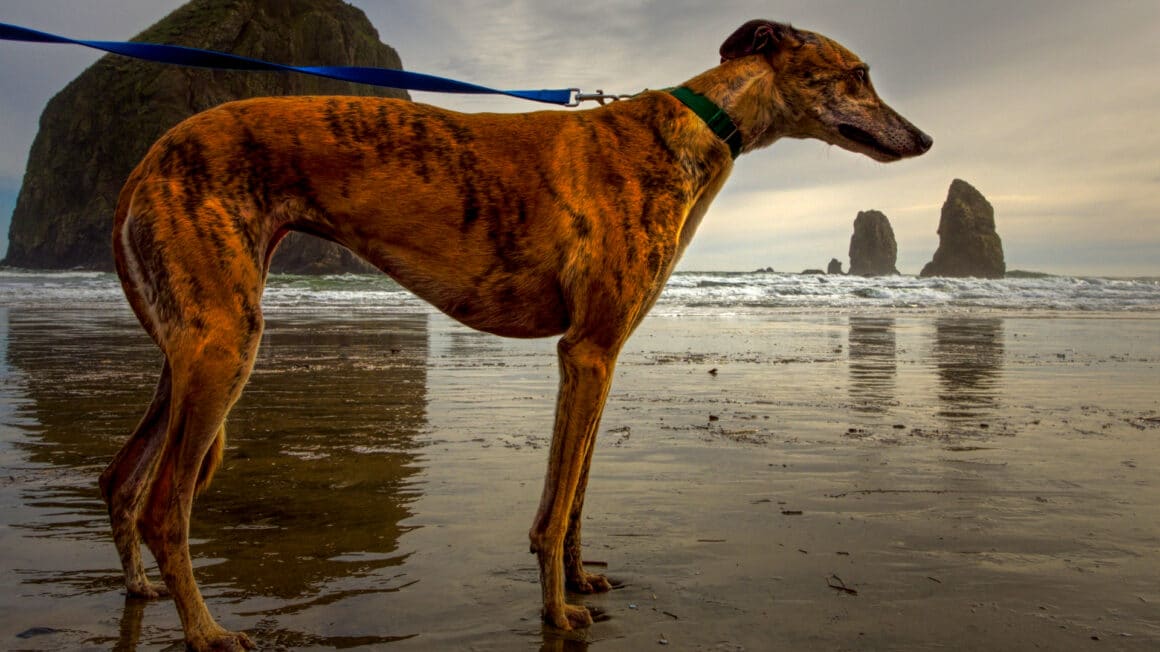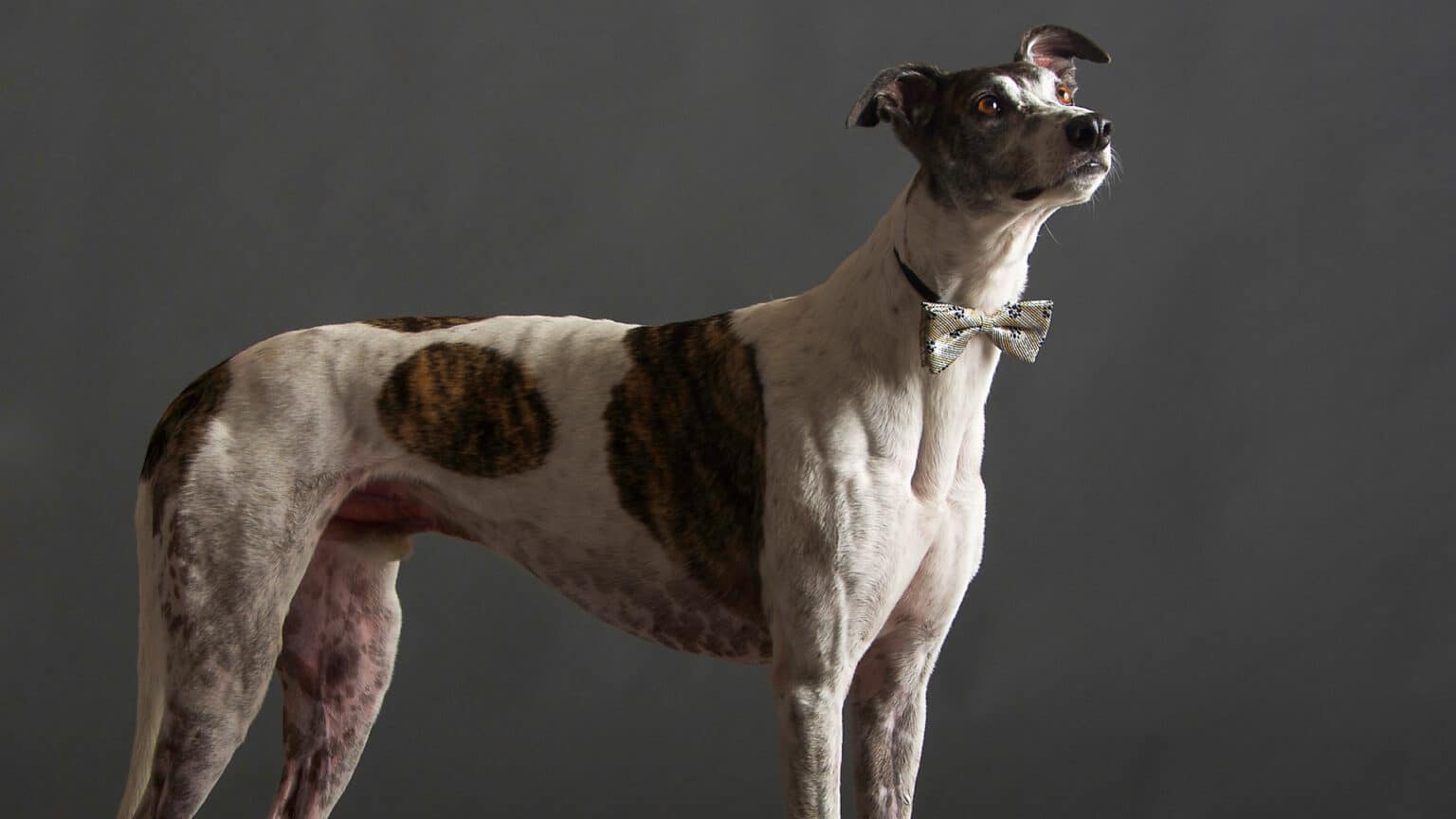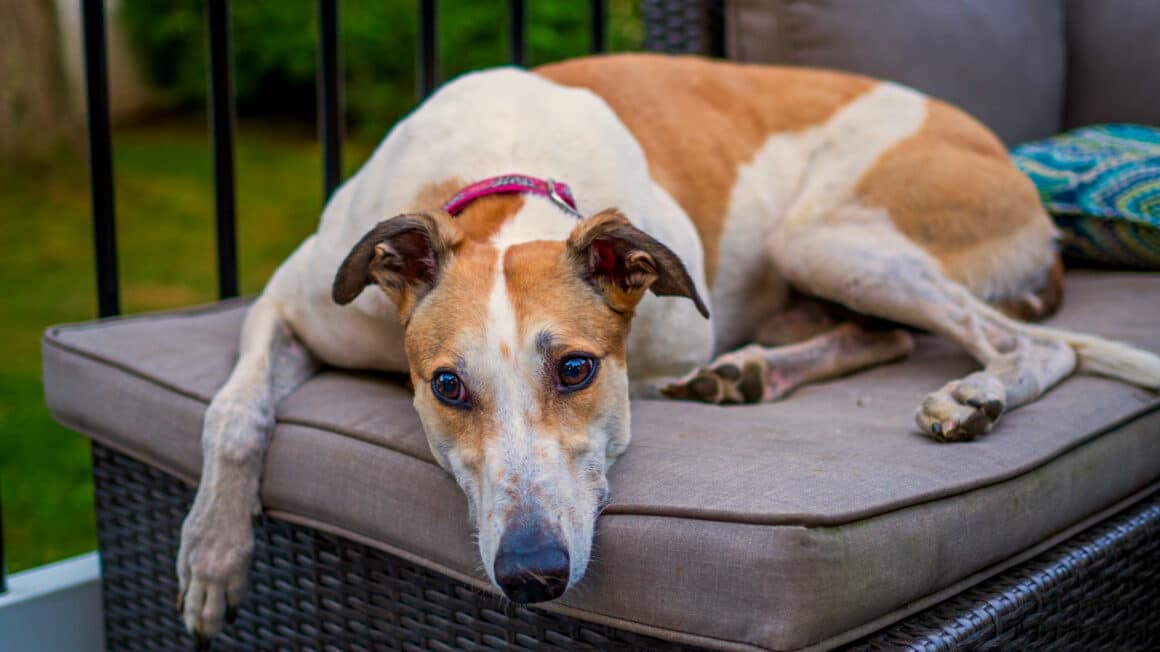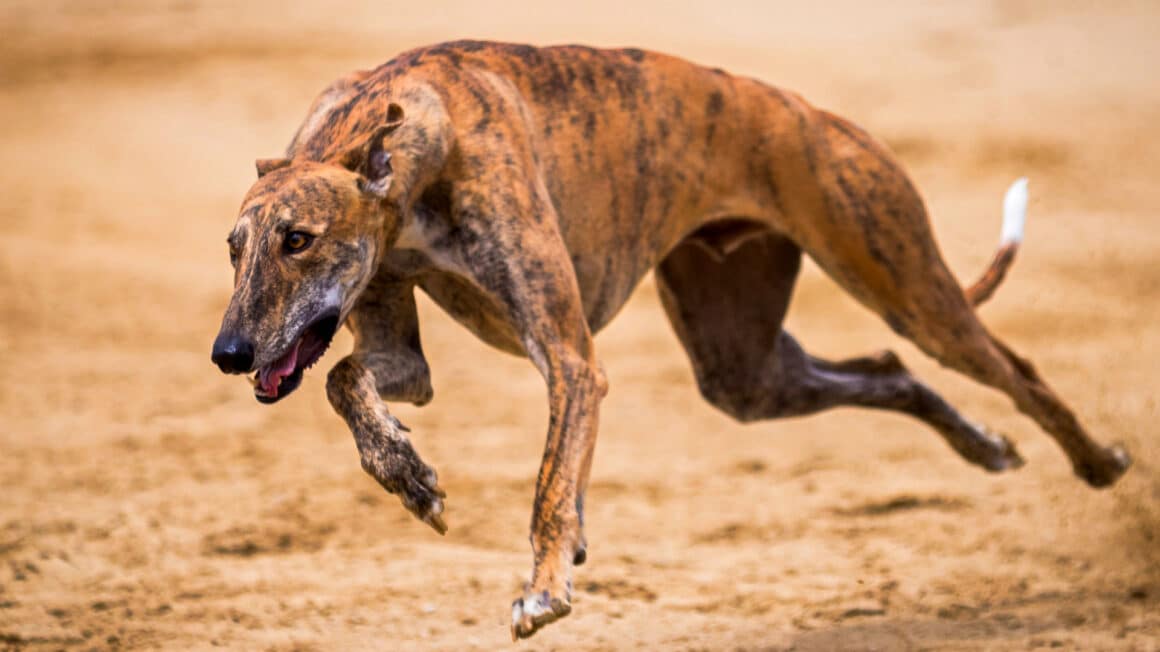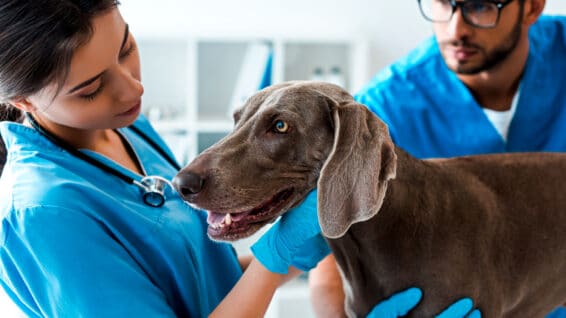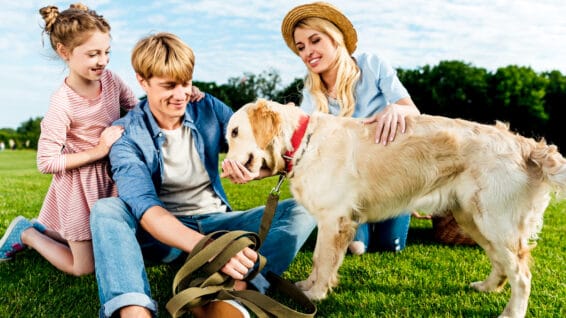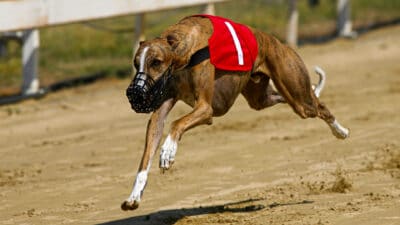Greyhound dog breed
- Last updated: February 6. 2022
- Categories: Dog breeds, Hound dogs, Large dogs, Short hair
- Post views: 845
The Greyhounds are large dogs that can be up to 74 cm / 29 inches from the ground and up to the shoulders, weighing up to 32 kg / 70 pounds. Originally bred for hare coursing in Great Britain ages ago, the Greyhounds today are mostly used for racing, lure coursing, open-field coursing, and of course as pets. Even though they are race hounds, their energy levels are quite low, so exercise requirements are not among the highest for these dogs. Greyhounds are not vocal dogs, they are considered low-barkers and mostly just bark during play. They are medium shedders, but brushing will take care of most loose and dead hair
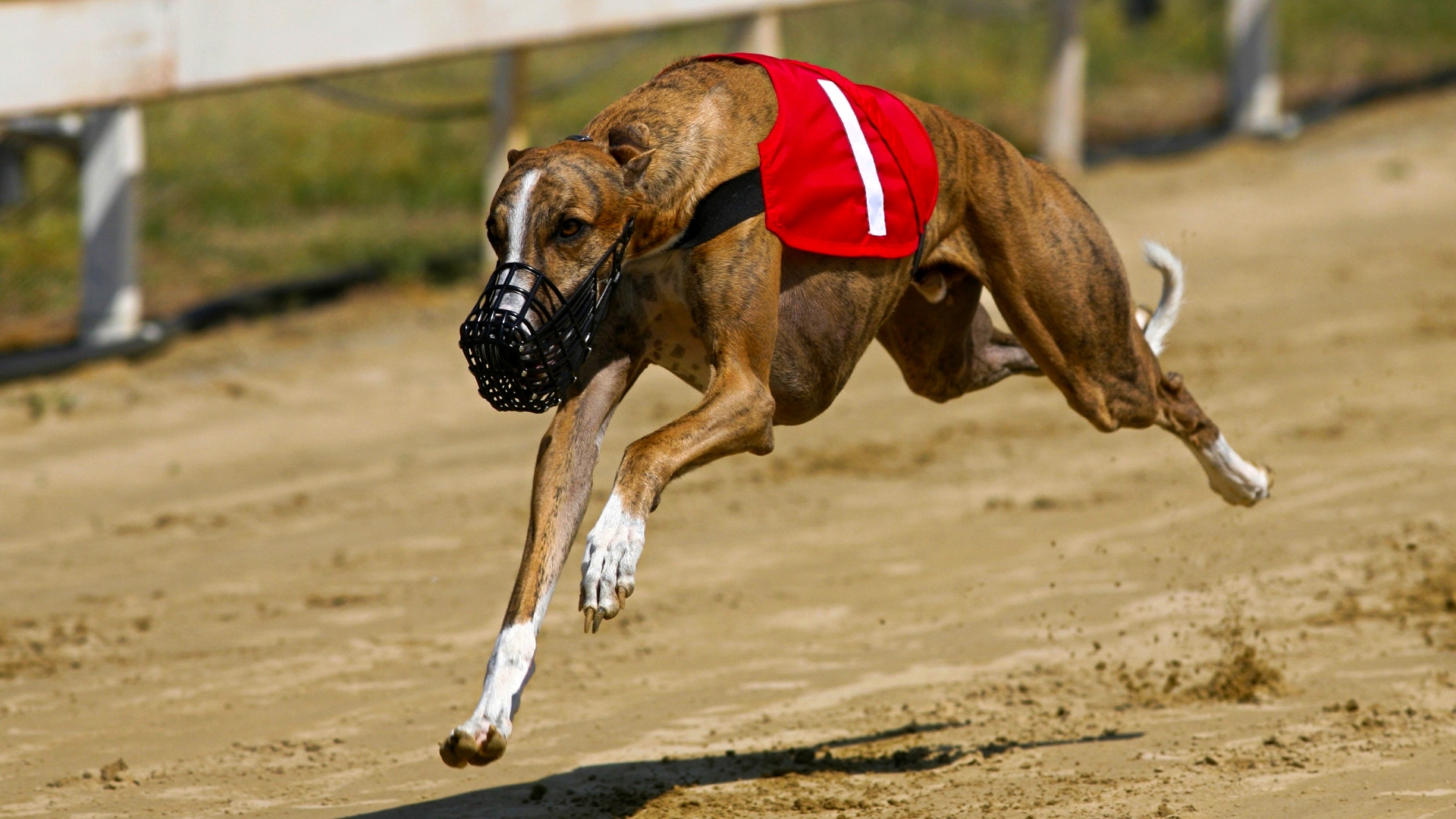
M: 68 - 74 cm / 27 - 29 in
F: 66 - 71 cm / 26 - 28 in
M: 29 - 32 kg / 65 - 70 lbs
F: 27 - 29 kg / 60 - 65 lbs
Healthy dogs of this breed lives
average between 10 to 13 years
Hound: These dogs were bred for
hunting. They are great trackers
Greyhound general information
The Greyhound is an ancient dog breed that originates from Great Britain, at least that is where it was developed to a standard. Pictures of Greyhound-like dogs have been depicted since ancient Egyptian, Greek, and Roman times, and have been found on walls in Egyptian tombs dating back as far as 4000 BC. By Saxon times, the Greyhound dogs was already well-established in Great Britain, favored by both commoners for their ability to put food on the table, and by the nobility for the sport of the chase. Early immigrants brought with them their Greyhounds to America where they proved adept at coursing on the open plains. Coursing was eventually made available to the masses by staging it in closed parks and eventually on racetracks with a mechanical lure, which is what the Greyhounds turned out to be most known for. The Greyhound was recognized as a breed by the American Kennel Club all the way back in the year 1885
Greyhound breed appearance
Greyhounds are quite large dogs, but most of their size comes from length and height. Male Greyhounds can be up to 74 cm / 29 inches tall from the ground and up to the shoulders, having a max weight of 32 kg / 70 lbs. They have a long, narrow head equipped with small, folded ears and bright, intelligent, oval eyes, obliquely set, preferably dark of color. Greyhounds can be black, white, red, blue, fawn, fallow, brindle, or any of these colors broken with white. They have a strongly built muscular body with a deep chest and well-arched loins, a long fine tail, and long hare-like feet. If you want to read more detailed appearance information about the Greyhound and all the specifications, you can do so in this breed standard info sheet from the Fédération Cynologique Internationale
Greyhound breed temperament
Greyhounds have a medium rating when it comes to socialization. They are good with other dogs, but not so much with other smaller pets unless they have been raised with them, which is due to their strong chase instinct. When it comes to strangers, they can be reserved and sometimes timid. The Greyhound is a calm well-mannered dog while remaining indoors, while outdoors, they tend to chase small things that move. As Greyhounds are tolerant and non-aggressive, they make great family dogs. But as with all dog breeds, socialization from an early age is important. Playtime with children should also be supervised at all times for the safety of both parties. Since the Greyhounds are calm indoors and don’t bark a lot, they are also great candidates for apartment living
Greyhound breed health
Greyhounds are generally healthy dogs as long as they come from reputable breeders and not puppy mills. Their main health concern is osteosarcoma, a bone cancer. They can also be subject to esophageal achalasia and gastric torsion, also known as bloat. As with all dog breeds, they are also prone to developing certain common diseases. This can include eye problems, skin allergies, orthopedic problems, and ear infections. Regular wellness checkups at the vet should be done at least once a year to track the dog’s development and catch any potential health issues early, which improves the chances of successful treatment. If you suspect that your dog is having issues or have changed its behavior radically, contact your local vet and schedule an appointment as soon as possible
Greyhound shedding and grooming
Greyhounds are single-coated dogs with a moderate shedding level throughout the year, and as with most dog breeds, they blow their coat during spring and autumn which increases the shedding significantly until the new coat is in place. Frequent brushing during this period will help reduce the amount of fur floating around the home. Since they are single-coated, they are also less tolerant to heat and cold than double-coated dogs. Keeping the dog on a meat-rich diet also helps reduce the shedding amount and prevents dry skin. Meat is digested and absorbed quickly, promoting better overall health in your furry little buddy. If your dog is subject to excessive shedding, contact your local veterinarian and ask for guidance and perhaps book an appointment for a checkup
Greyhound barking level
Greyhounds are not known to be barkers, they are mostly calm dogs that only bark when playing or hanging out with other Greyhounds. They may also bark to alert you when they feel it’s time for a walk. Other common reasons for dogs barking are protection, alerting, being bored, fear, seeking attention, separation anxiety, or just saying hello. You can read more about barking at this guide from WebMD Pets: Understanding why dogs bark. All dog breeds can be trained to reduce barking, another thing that should be focused on learning from an early age. There are plenty of online resources where you can learn how to reduce barking, like YouTube videos, online courses, and websites. You might also want to shop for some dog training books too if your dog is barking excessively
Greyhound dog breed training
Greyhounds are considered fairly easy to train, but they are also independent dogs used to making their own decisions and have a what’s in for me attitude when it comes to training. They generally figure out the association between commands and actions quite easily. As with all breeds, training can be a challenge for inexperienced owners, acquiring professional help from a dog trainer is always a good choice to get started. The first step on the long road is signing up for a puppy class, here you will learn the basics about dog care and training your new buddy, most classes also have supervised playtime among the puppies for socialization. You can also watch dog training videos from professional trainers, attend online dog training courses, or maybe get yourself a dog training book
Greyhound exercise requirements
Greyhounds are the fastest dog breed, but their energy levels are not as high as you might think. Nicknamed the world’s fastest couch potato, Greyhounds are perfectly happy laying on the couch. But as with all dog breeds, they do need their daily exercise, but with Greyhounds, you don’t need to devote too much of your day to it. Recommended exercise for Greyhounds is one hour a day, which can be in the form of walking or playing games. They were bred to be sprinters, not long-distance runners, so if you plan to run with it, start out with short distances before increasing. Dogs that don’t get the exercise they need can get bored, depressed, and destructive as they try to find ways to entertain themself. Making sure the dog gets enough exercise keeps it both healthy and happy
Caring for dogs
Grooming is not the only maintenance your dog requires throughout its life. Complete examinations at the vet should be done at least once a year for adult dogs. Puppies should come in every 3 or 4 weeks until they are around four months old. Contact your vet and they will set you up with schedules.
Trimming the claws should be done whenever they touch the ground when the dog is standing up, or make it a frequent routine to keep them short
Brushing the teeth should be done on a daily basis to prevent gum diseases. Chew bones and toys will also help strengthen your dog’s teeth and gums
Cleaning the ears to prevent ear infections is also another important part of the dog’s routine maintenance. You can have your vet show you how to do it
Socializing dogs
No matter what kind of dog breed you have, socializing it from an early age is the most important thing you can do in order to get a well-behaving buddy that reacts to the world around it in a healthy way. Until your puppy is around 16 weeks old, it should encounter different kinds of people, situations, and locations, learning that the world is a wonderful place to live. Puppies have a short developmental window in which their experiences will form their future selves. Puppies should however not be forced into situations they might feel uncomfortable with, as bad experiences may imprint and stay with the dog for the rest of the life. You can watch free videos from professional dog trainers on how to socialize your new puppy and learn how to do so the correct way
Greyhounds on Instagram
Here are some pictures of the Greyhound on Instagram. See even more photos of this cute dog breed by exploring #GreyHound or by using Google Image Search
Video of the Greyhound breed
Here is a video of the Greyhound from Petplan UK that covers the most important aspects of the breed. Well worth watching if you consider getting this hound
Frequently asked questions
Greyhounds are generally good family dogs, they are calm and quiet indoors, as well as tolerant and non-aggressive. As with all dog breeds, playtime with young children should be supervised for the safety of both parties
There are no dogs that are hypoallergenic, some breeds can however cause fewer allergic reactions than other breeds. The proteins that dogs produce are what causes the allergic reactions. These proteins are found in the hair, saliva, dander, and urine. Some individuals may have an irritant response to the actual dog hair, the solution for that is getting a dog with a low level of shedding. You can continue reading about allergies and reactions at HealthLine
Greyhounds are moderate shedders throughout the year, and as with most dog breeds, they blow their coats during spring and autumn
Greyhounds are intelligent dogs, they are also independent and used to doing things their way. This can make training a bit more difficult than with other dog breeds
Greyhounds can adapt well to apartment living, as they are calm and quiet indoors. They are perfectly happy relaxing on the couch, as long as they have had their exercise needs met
Greyhounds can be left home alone for 6 to 9 hours. The longer the owner is away, the higher the chance of the dog getting bored, lonely, or becoming subject to separation anxiety
No. Greyhounds are not aggressive dogs by nature. But as with all dog breeds, they should be socialized from an early age so they learn how to react to the world around them in a healthy and proper way
References and resources
You can absorb more knowledge about this dog breed from the resources below. Websites, books, and social media sites where you can ask dog owners questions
